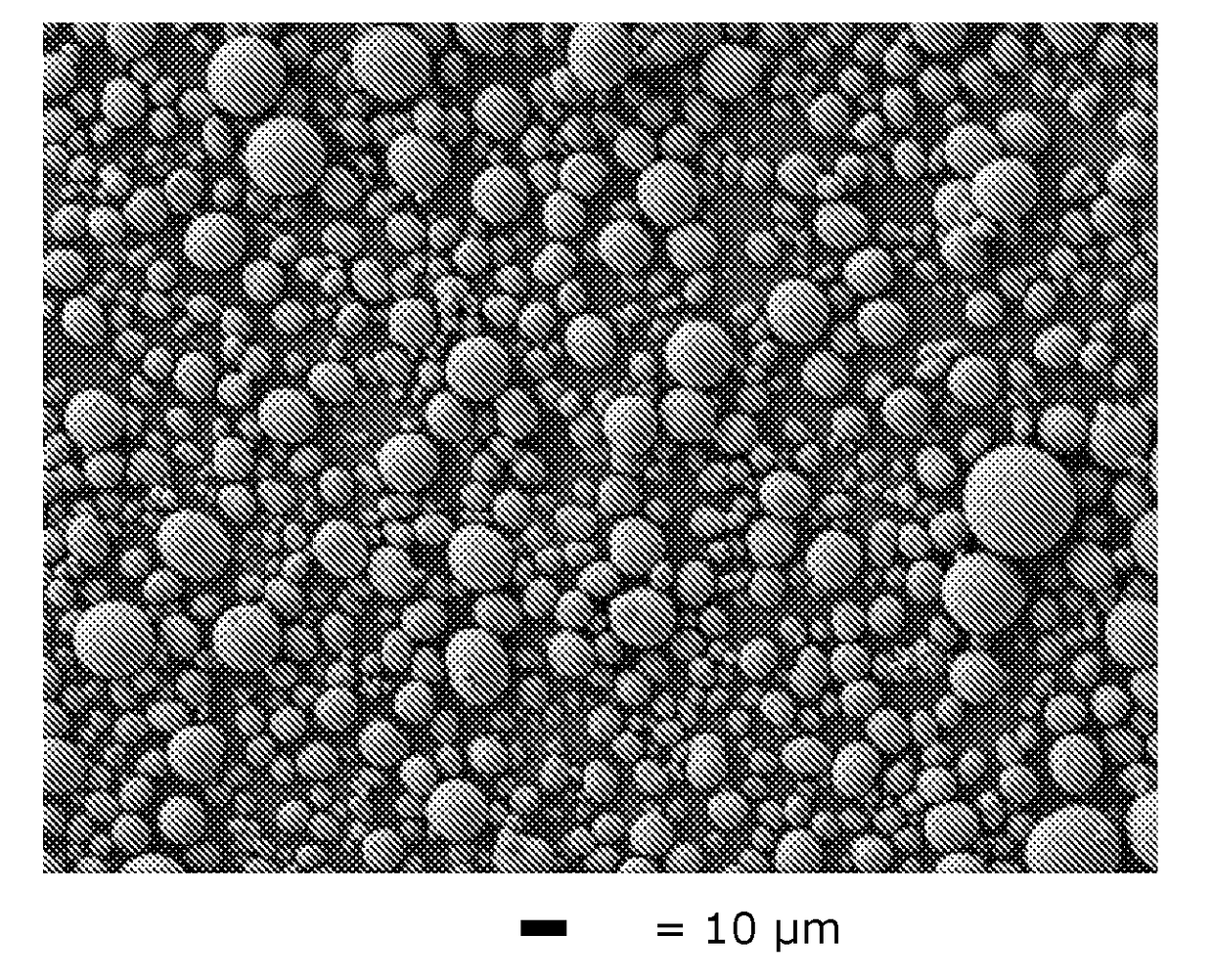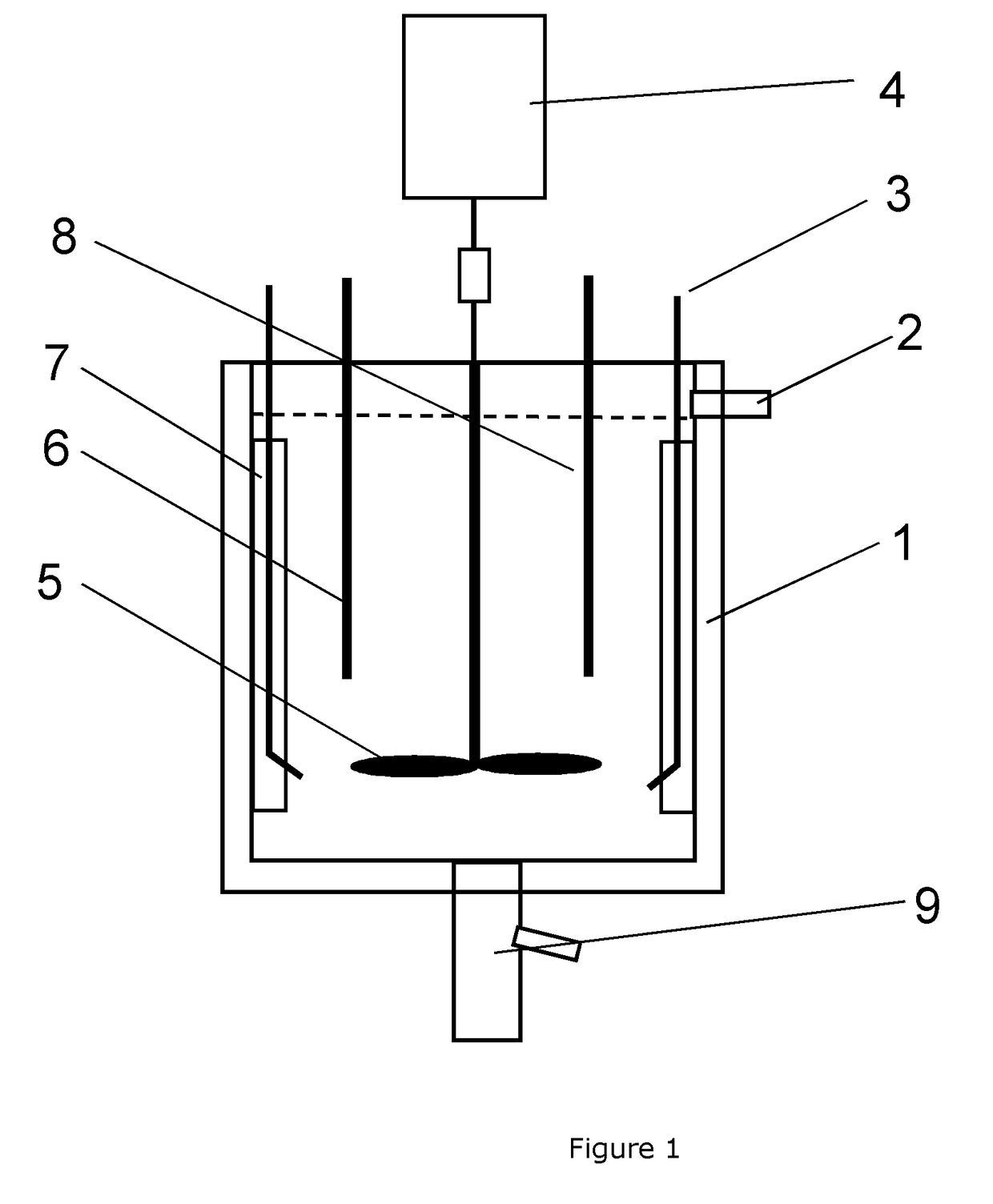Carbonate Precursors for Lithium Nickel Manganese Cobalt Oxide Cathode Material and the Method of Making Same
a lithium nickel manganese cobalt oxide and precursor material technology, applied in the direction of nickel compounds, cell components, transportation and packaging, etc., can solve the problems of relative scarcity of co resources, relative high cost of cobalt metal, and serious drawbacks of lco, so as to reduce the energy density of the battery
- Summary
- Abstract
- Description
- Claims
- Application Information
AI Technical Summary
Benefits of technology
Problems solved by technology
Method used
Image
Examples
example 1
[0064]The same precipitation conditions as in Comparative Example 1 are used, but with seeding. For preparing the seed slurry, the seeds are re-dispersed into water to form a homogeneous slurry under stirring with a 200 g / L solid load level. The seeds are prepared by bead milling the big carbonate particles which are produced from the carbonate process without seeding of Comp. Ex. 1 (and hence M=M′), to decrease the median particle size (D50) to 1.0 μm.
[0065]The feed, carbonate solution and the seed slurry are pumped into the 10 L CSTR reactor. The molar ratio of CO3: Metal=1.0 and the molar ratio of M′seeds / M″feed is set at 0.005 (0.5 wt %), 0.01 (1.0 wt %) and 0.02 (2.0 wt %) consecutively, and the residence time is set at 3 hours. The feed solution, carbonate solution and seed slurry are continuously pumped into the CSTR reactor set at a precipitation temperature of 90° C., with an impeller stirring speed at 1000 rpm. The carbonate precursor slurry is collected through the overfl...
example 2
[0069]The same precipitation conditions as in Comparative Example 2 are used, but with seeding. Small seed particles (1.0 μm) are produced by ball milling the big carbonate precursor particles collected under the same precipitation conditions without seeding from a CSTR reactor (Comp. Ex. 2, hence M=M′). For preparing the seed slurry, small size MCO3 particles (Ni:Mn:Co=22:67:11) are re-dispersed into water to form a homogeneous slurry under stirring with a 150 g / L solid loading level.
[0070]The feed, hydroxide and carbonate solution, and the seed slurry are pumped into the 10 L CSTR reactor, with flow rates of Rfeed=25.7 ml / min, RNaOH=0.2 ml / min and Rcarbonate=29.7 ml / min, respectively. The molar ratio of CO3: Metal=1.0, the molar ratio of OH:CO3=0.04, and the molar ratio of M′seeds / M″feed is set at 0.01 (1 wt %) and 0.05 (5 wt %) consecutively. The residence time is set at 3 hours. The solutions are continuously pumped into the CSTR reactor at a precipitation temperature of 80° C.,...
example 3
[0074]Preparation of feed solution: NiSO4, MnSO4, CoSO4 are dissolved in deionized water and a transition metal solution is prepared, with a concentration of Ni, Mn, Co of 1.2 mol / L, 0.4 mol / L, 0.4 mol / L, respectively (Ni:Mn:Co=60:20:20). For preparing the carbonate solution Na2CO3 is dissolved in deionized water and a 1.65 mol / L Na2CO3 solution is obtained.
[0075]The same precipitation conditions as in Example 1 are used, but with M′seeds / M″feed=0.04 and MnCO3 seeding (here Mn=M′≠M). The MnCO3 seeds are produced by ball milling commercially available MnCO3 product to 0.5 μm and then dispersing it into water. The solid loading of the seeds slurry is 100 g / L. Before seeding, the particle size of the carbonate precursor in the reactor is continuously fluctuating and the D50 is 24.8 μm. After seeding, the median particle size in the reactor is stabilized at 7.1 μm. The carbonate precursor slurry is collected through the overflow of the CSTR reactor. Then, the obtained precursor slurry i...
PUM
| Property | Measurement | Unit |
|---|---|---|
| median particle size D50 | aaaaa | aaaaa |
| median particle size D50 | aaaaa | aaaaa |
| concentration | aaaaa | aaaaa |
Abstract
Description
Claims
Application Information
 Login to View More
Login to View More - R&D
- Intellectual Property
- Life Sciences
- Materials
- Tech Scout
- Unparalleled Data Quality
- Higher Quality Content
- 60% Fewer Hallucinations
Browse by: Latest US Patents, China's latest patents, Technical Efficacy Thesaurus, Application Domain, Technology Topic, Popular Technical Reports.
© 2025 PatSnap. All rights reserved.Legal|Privacy policy|Modern Slavery Act Transparency Statement|Sitemap|About US| Contact US: help@patsnap.com



